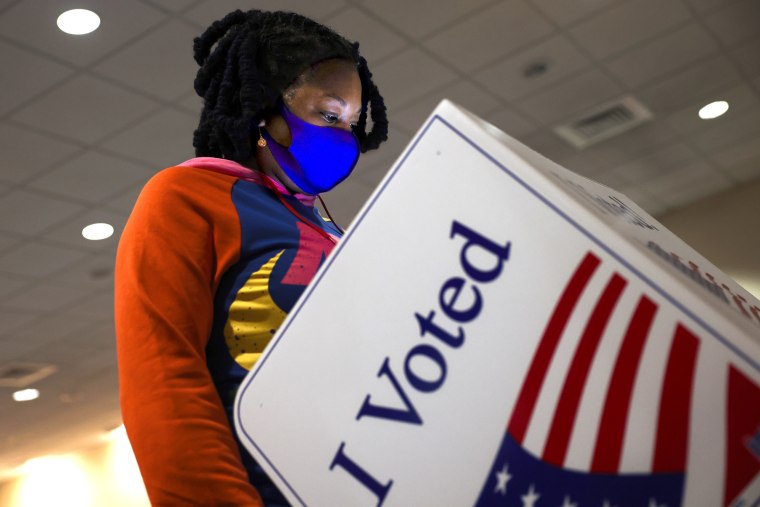WASHINGTON — The Supreme Court's conservative majority appeared skeptical Wednesday that Republicans in South Carolina unlawfully considered race when they drew a congressional district in a way that removed thousands of Black voters.
Conservative justices, who hold a 6-3 majority, questioned whether civil rights groups that challenged the district had sufficient evidence to show that legislators were focused predominantly on race when they drew the map. The state says its sole goal was to increase the Republican tilt in the district.
With Black voters tending to vote for Democrats, the case raises the question of whether Republicans were targeting them primarily for racial or partisan reasons.
The case has the justices grappling with the impact of their own ruling from 2019 that effectively gave the green light to so-called partisan gerrymandering when it said federal courts have no role in assessing such claims.
Republicans led by South Carolina Senate President Thomas Alexander are contesting a January ruling that said race was of predominant concern when one of the seven districts was drawn.
The district, which includes the city and county of Charleston, is represented by Rep. Nancy Mace, a Republican.
After the 2020 census, Republicans redrew the boundaries to strengthen GOP control of what had become a competitive district.
Conservative Chief Justice John Roberts said the plaintiffs' case rested solely on "circumstantial evidence" and was, in that sense, different from other racial gerrymandering cases the court has decided.
"This would be breaking new ground in our voting rights jurisprudence," he said of a decision against the state.
Fellow conservative Justice Amy Coney Barrett likewise said the plaintiffs have an "exceedingly heavy burden" to show that the state acted inappropriately, with the court generally adopting the presumption that legislatures act in good faith.
Conservative Justice Neil Gorsuch was among those who probed the difficulty of disentangling race from partisanship.
"Here there's no evidence the Legislature could have achieved its partisan tilt, which everyone says is permissible in any other way," he said.
Of all the conservatives, Justice Samuel Alito was most persistent in questioning the plaintiffs' theory of the case, asking a series of questions digging into the facts and how the lower court reached its conclusions.
It is not the Supreme Court's role to merely "rubber-stamp" the lower court's findings, he said.
The court's three liberal justices were more sympathetic to the plaintiffs, saying the Supreme Court should overturn the lower court only if grave errors were identified in its handling of the case.
Justice Ketanji Brown Jackson pushed back against the notion that plaintiffs did not have sufficient evidence, saying that under court precedents they are not required to produce a "smoking gun" that race was the state's primary consideration.
On a similar theme, Justice Elena Kagan said there are "good reasons to use race as a proxy for politics" instead of election data, which was limited to the 2020 presidential election, because race can be "more predictive of future voting behavior."
Republicans had a "clear incentive" to look at race, because "everybody can tell you that if you really want to draw a stable partisan gerrymander, you do not rely on single presidential year election data," she said.
Democrat Joe Cunningham won the seat in 2018 and narrowly lost to Mace in 2020. The new map was used in the 2022 midterm elections, in which Mace won by a wider margin than she had two years previously.
The roughly 30,000 Black voters who were moved out of the district were placed into the district held by Rep. James Clyburn, D-S.C., who is Black. It is the only one of seven congressional districts in the state held by Democrats.
Although the plaintiffs won in the lower courts, a revised map has not been drawn, with the litigation on hold until the Supreme Court issues its ruling. Both sides have asked the justices to rule by Jan. 1 so that, if one is required, a new map can be put in place for the 2024 elections.
A win for the plaintiffs would most likely make the district more competitive, but it would not necessarily mean a Democrat would win.
Lawyers for the Republican legislators said in court papers that the three-judge panel should have acted on the presumption that the Legislature was acting in good faith. They also said there were obvious political reasons that legislators wanted to move predominantly Democratic voters out of the district to cement a Republican majority.
Civil rights groups, including the NAACP Legal Defense and Educational Fund, alleged not only that Republicans unlawfully considered race when they drew the maps but that they also diluted the power of Black voters in doing so.
The claims were brought under the Constitution's 14th Amendment, which requires that the law applies equally to everyone. As such, although it is a racial gerrymandering claim, it arises under a different legal theory from the major ruling this year in which civil rights advocates successfully challenged Republican-drawn maps in Alabama under the Voting Rights Act.
That case featured mirror-image legal arguments, with Alabama Republicans arguing that the state should have been allowed to use race-neutral line-drawing principles even if that meant there was only one Black-majority district, instead of two. The plaintiffs meanwhile, unlike in the South Carolina case, argued that race was required to be a consideration under the Voting Rights Act.

